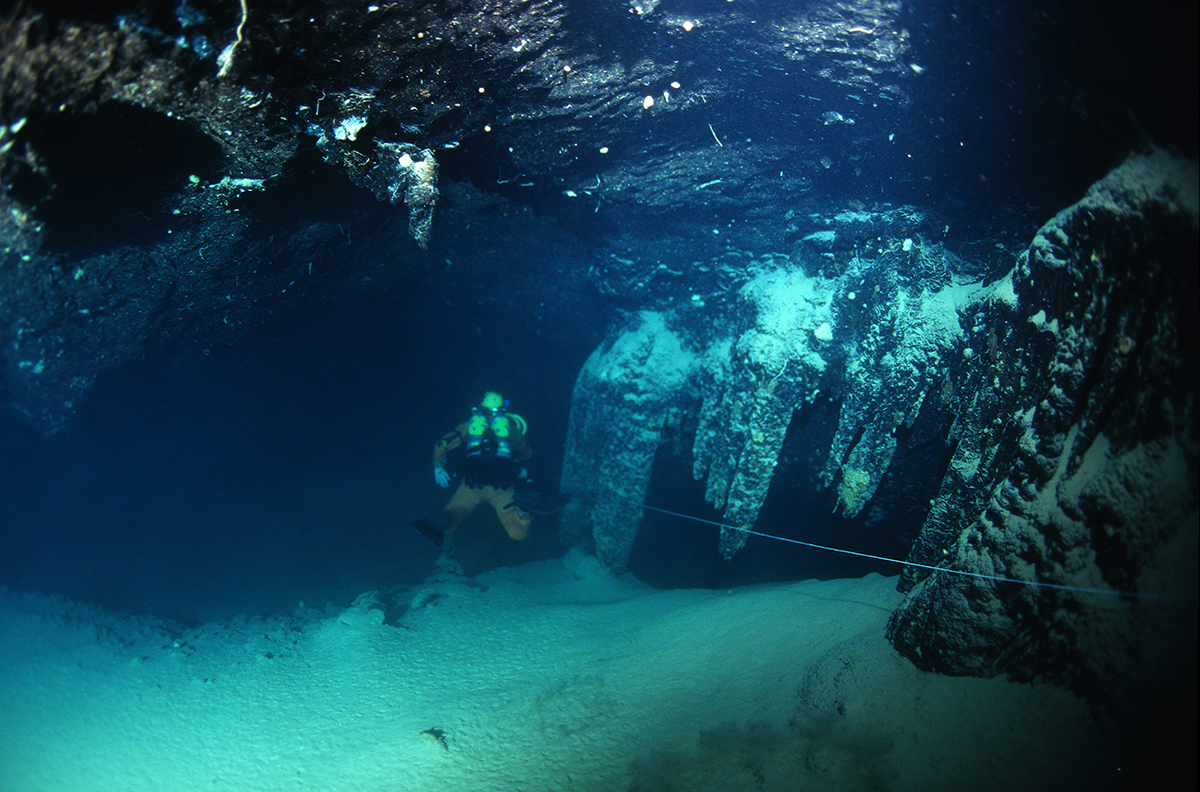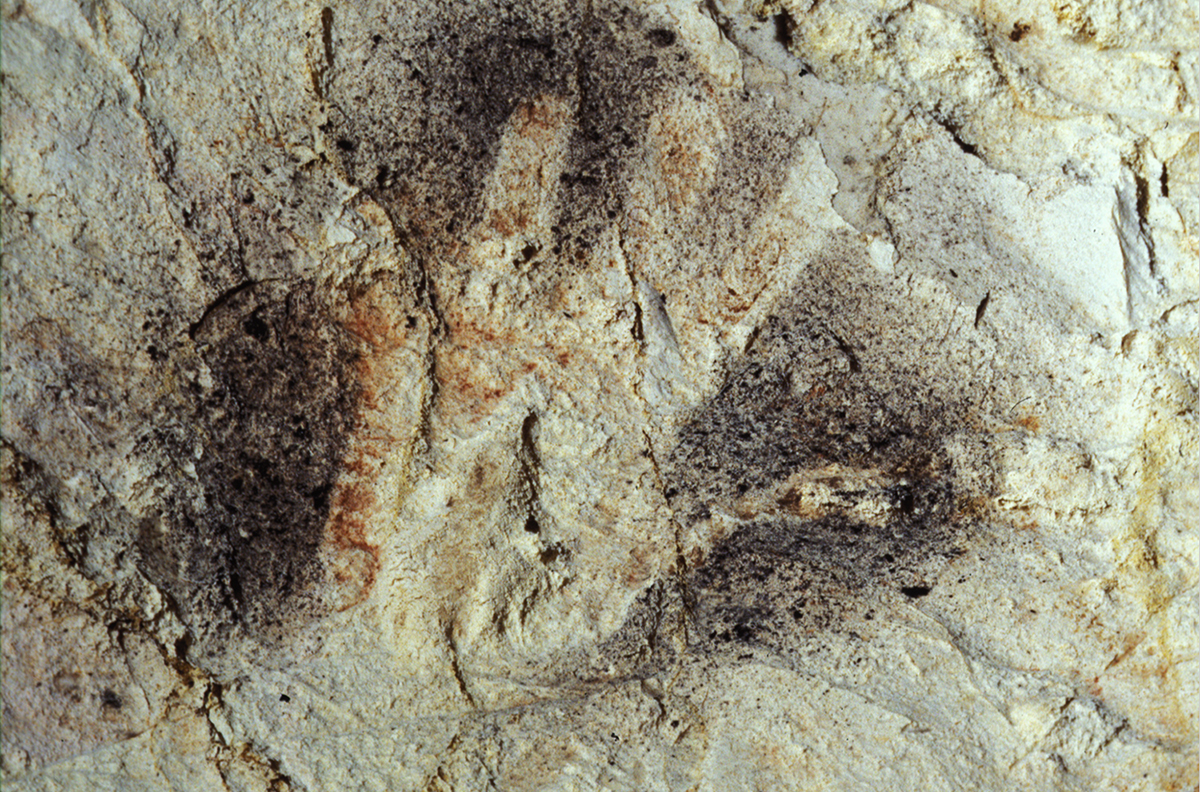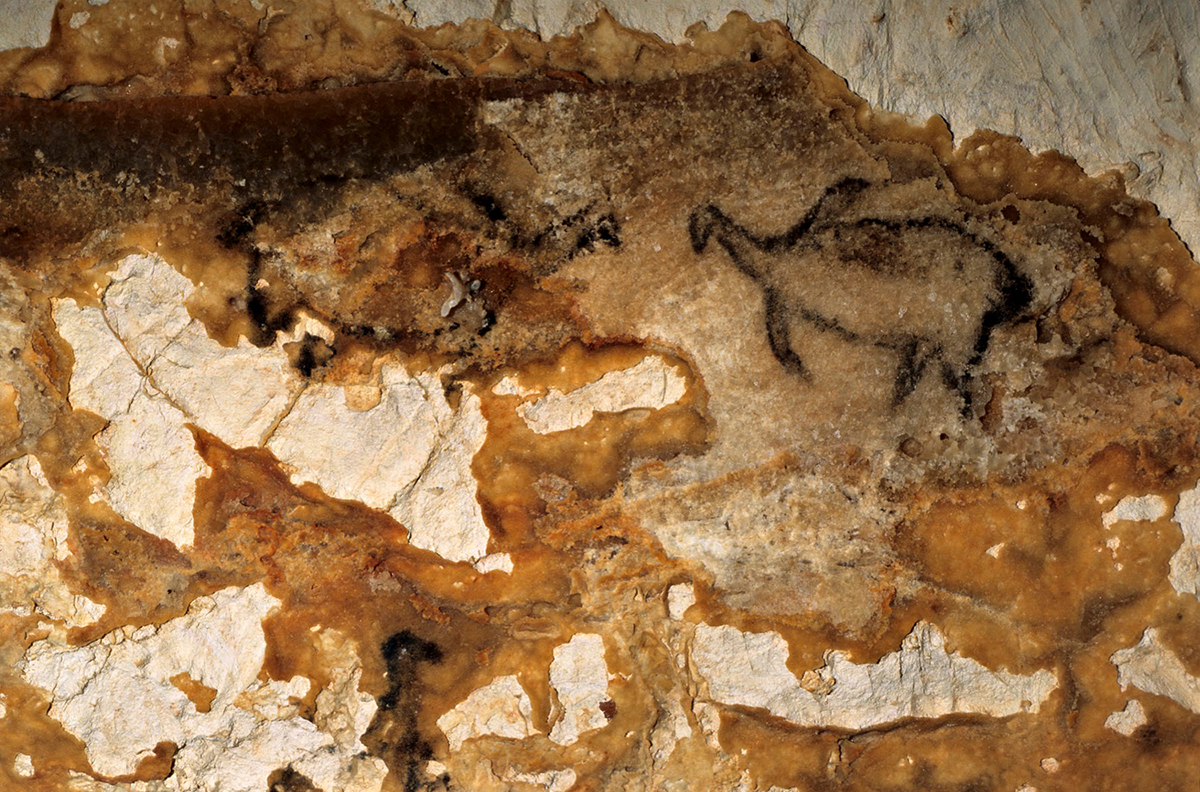


An article by Pierre Rochiccioli on AFP/phys.org - Race to save undersea Stone Age cave art masterpieces - reports on the work being carried out in the cave of Cosquer in southern France and the race to finish the digital mapping for a 3D reconstruction of the cave.
To reach the only place in the world where cave paintings of prehistoric marine life have been found, archaeologists have to dive to the bottom of the Mediterranean off southern France. Then they have to negotiate a 137 meter natural tunnel into the rock, passing through the mouth of the cave until they emerge into a huge cavern, much of it now submerged.

Three men died trying to discover this "underwater Lascaux" as rumors spread of a cave to match the one in southwestern France - Lascaux - that completely changed the way we see our Stone Age ancestors. Archaeologist Luc Vanrell's life changed the second he surfaced inside the Cosquer cavern and saw its staggering images. Even now, 30 years on, he remembers the "aesthetic shock".

But the cave and its treasures, some dating back more than 30,000 years, are in grave danger. Climate change and water and plastic pollution are threatening to wash away the art prehistoric men and women created over 15 millennia.
Since a sudden 12 centimeter rise in the sea level there in 2011, Vanrell and his colleagues have been in a race against time to record everything they can. Every year the high water mark rises a few more millimeters, eating away a little more of the ancient paintings and carvings. Vanrell and the diver-archaeologists he leads are having to work faster and faster to explore the last corners of the 2,500 square meter grotto to preserve a trace of its prehistoric wonders before they are lost.

An almost life-sized recreation of the Cosquer cavern will open this week a few kilometers (miles) away in Marseille. AFP joined the dive team earlier this year as they raced to finish the digital mapping for a 3D reconstruction of the cave. Around 600 signs, images and carvings - some of aquatic life never before seen in cave paintings - have been found on the walls of the immense cave 37 meters below the azure waters of the breathtaking Calanques inlets east of Marseille. "When it is finished, our virtual Cosquer cavern—which is accurate to within millimeters—will be indispensable for researchers and archaeologists who will not be able to physically get inside."

The cave was some "10 kilometers from the coast" when it was in use, archaeologist Michel Olive told AFP. "At the time we were in the middle of an ice age and the sea was 135 meters lower" than it is today. From the dive boat, Olive, who is in charge of studying the cave, draws with his finger a vast plain where the Mediterranean now is. "The entrance to the cave was on a little promontory facing south over grassland protected by cliffs. It was an extremely good place for prehistoric man," he said. The cave was occupied from 33,000 to 18,500 years ago.
The walls of the cave show the coastal plain was teeming with wildlife—horses, deer, bison, ibex, prehistoric auroch cows, saiga antelopes but also seals, penguins, fish and a cat and a bear. The 229 figures depicted on the walls cover 13 different species. Men, women and children also left a mark of themselves on the walls, with 69 red or black hand prints as well as three left by mistake. There are also hundreds of geometric signs and eight depictions of male and female body parts.
Henri Cosquer, a professional deep sea diver running a diving school, said he found the cave by chance in 1985, just 15 meters off the bare limestone cliffs. Little by little he dared to venture further and further into 137-meter-long breach in the cliff until one day he came out through a cavity cut out by the sea.
The idea of making a replica of the site was first mooted soon after the cave was discovered. But it wasn't until 2016 that the regional government decided that it would be in a renovated modern building in Marseille next to Mucem, the museum of European and Mediterranean civilisations at the mouth of the city's Old Port. Using the 3D data gathered by the archaeological teams, the 23-million-euro replica is slightly smaller than the original cave but includes copies of all the paintings and 90 percent of the carvings, said Laurent Delbos from Klebert Rossillon, the company which copied the Chauvet cave in 2015. Artist Gilles Tosello is one of the craftspeople who has been copying the paintings using the same charcoal and tools that his Stone Age forerunners used.
by Bradshaw Foundation
Monday 30 May 2022
by Bradshaw Foundation
Wednesday 19 January 2022
by Bradshaw Foundation
Thursday 06 January 2022
by Bradshaw Foundation
Monday 06 December 2021
by Bradshaw Foundation
Monday 29 November 2021
by Bradshaw Foundation
Monday 25 October 2021
by Bradshaw Foundation
Monday 12 July 2021
by Bradshaw Foundation
Monday 24 May 2021
by Bradshaw Foundation
Tuesday 20 April 2021
by Bradshaw Foundation
Thursday 01 April 2021
by Bradshaw Foundation
Tuesday 23 February 2021
by Bradshaw Foundation
Thursday 14 January 2021
by Bradshaw Foundation
Friday 18 December 2020
by Bradshaw Foundation
Sunday 06 December 2020
by Bradshaw Foundation
Thursday 26 November 2020
by Bradshaw Foundation
Wednesday 07 October 2020
by Bradshaw Foundation
Monday 30 May 2022
by Bradshaw Foundation
Wednesday 19 January 2022
by Bradshaw Foundation
Thursday 06 January 2022
by Bradshaw Foundation
Monday 06 December 2021
by Bradshaw Foundation
Monday 29 November 2021
by Bradshaw Foundation
Monday 25 October 2021
by Bradshaw Foundation
Monday 12 July 2021
by Bradshaw Foundation
Monday 24 May 2021
by Bradshaw Foundation
Tuesday 20 April 2021
by Bradshaw Foundation
Thursday 01 April 2021
by Bradshaw Foundation
Tuesday 23 February 2021
by Bradshaw Foundation
Thursday 14 January 2021
by Bradshaw Foundation
Friday 18 December 2020
by Bradshaw Foundation
Sunday 06 December 2020
by Bradshaw Foundation
Thursday 26 November 2020
by Bradshaw Foundation
Wednesday 07 October 2020
Friend of the Foundation











